We recently covered an exercise-induced amino acid named BAIBA. This article expands on that article's research and introduces you to a tested and verified form of L-BAIBA named MitoBurn from NNB Nutrition.

NNB Nutrition has finally brought us a trusted and tested form of L-BAIBA, which we call an "exercise signal" that kickstarts incredible metabolic processes!
Early this decade, researchers discovered a large increase in the amounts of a non-protein amino acid known as "BAIBA" when both humans and animals exercised.[1] This amino acid, also known as β-aminoisobutyric acid, had been detected in human urine as far back as 1951,[2] but only recently has the scientific community realized just how important it truly is.
Discovering myokines
As researchers examined the link between physical activity and the changes that occur in response to muscle stress, they discovered compounds that are released from skeletal muscle during muscle contraction. These compounds were originally called "exercise factors", and later named to cytokines, but the ones that come from the skeletal muscle system are now defined as myokines.
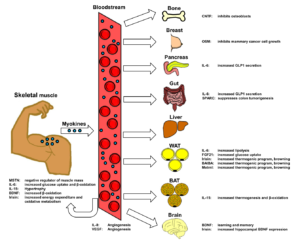
Due to the Myokines released, many researchers are now calling skeletal muscle itself an "endocrine organ"![3] BAIBA may be one of the most impactful ones.
The discovery of myokines has opened an exciting and vast field of study, specifically in exercise physiology. BAIBA is a myokine that is generated in response to exercise stimulus.Once researchers saw that BAIBA levels increased during exercise, they began connecting the dots, noting that it's actually more of a signal in the body, and initiates an incredible chain reaction of thermogenic, fat-releasing mechanisms.[1,4] BAIBA's presence is inversely correlated with many cardiometabolic risk factors, such as lower fasting blood sugar and insulin levels, less insulin resistance, and better lipid profiles. In general, more BAIBA meant a better metabolic profile.
The "exercise signal" molecule? Can we supplement it?
Naturally, scientists asked, "What happens if we supplement more BAIBA in these animals without exercise? Will it mimic some of the effects of exercise?"
The answer was yes. Demonstrated and published in 2014, oral BAIBA supplementation activated many of the same "thermogenic programs" as exercise itself does![1,5]
With that recent discovery began a firestorm of new research, investigating just how many metabolic processes this incredible molecule could assist. It turns out there are several.
BAIBA's Benefits
There is now animal research touting the following metabolic changes from BAIBA:
-
- Increased conversion from energy-storing white adipose tissue to energy-burning brown-like adipose tissue.[1,5]
- Increased fatty acid oxidation (fat burning)[1,7] and plasma beta-hydroxybutyrate (the primary ketone body generated when oxidizing fat).[7]
- Protection against fat gain in mice that have low leptin levels.[1,6]
- Improved insulin sensitivity and glucose tolerance.[8,9]
- Prevention of disuse-based bone and muscle loss.[10]
We're only scratching the surface with this research, as new information seems to come out each year at blazing speeds.
Meanwhile, back in 2015, "early adopter" supplement users began testing it for themselves -- at least when they could get a hold of a stable supply -- with no ill effects and many great anecdotal experiences.[11]
Finding BAIBA
Before NNB Nutrition hit the scene, BAIBA ingredients were incredibly difficult to source. It was tough to keep stable as a powder, and it was even tougher to procure in its most biologically active type -- L-BAIBA (or S-BAIBA),[4] as opposed to the less-potent D-BAIBA / R-BAIBA.
Fast forward five years later, and one brilliant science-driven company has figured it out, producing a lab-tested, stabilized form of L-BAIBA:
Introducing MitoBurn from NNB Nutrition

Interested in trying NNB Nutrition's MitoBurn for your brand's formulas? Contact us and we'll arrange a sample for you or email NNB Nutrition directly at info@nnbnutrition.com!
NNB Nutrition is an innovative ingredient development company with an elite team of over 100 scientists from over 10 countries. Using their industry-leading knowledge and state of the art technology, they seized the opportunity to create the ingredient we have been searching for these past five years.
They're calling it MitoBurn, and it's the real deal patent-pending L-isomer free acid form of BAIBA, with HPLC tests further verified by optical rotation testing to prove that it is what they say it is.

NNB Nutrition is an innovative ingredient development company with an elite team of over 100 scientists from over 10 countries.
After discussing a bit more about MitoBurn itself, this article covers all of the currently-known information about this "exercise signal supplement", and the growing amount of research successfully using it.
What is MitoBurn?
MitoBurn is L-BAIBA that comes in powder form and is stable, odor-free, and nearly tasteless. There's only a slight bit of bitterness, which is completely masked by every liquid drink we've mixed it with (pre workout supplements, fat burning powders, and amino acid supplements).
More information on MitoBurn can be found at NNBNutrition.com or by contacting info@nnbnutrition.com, and an example HPLC lab test is provided below as an example of what NNB can provide to supplement brands.
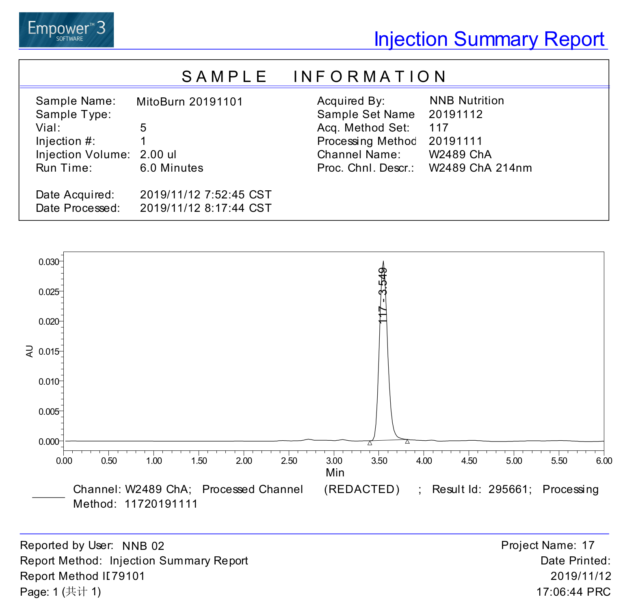
NNB Nutrition provided this HPLC lab test for MitoBurn, with one central peak and no additional "noise" or impurities.
MitoBurn / BAIBA Discussion with Shawn Wells
Shawn Wells, MPH RD CISSN FISSN, is the Chief Science Officer with NNB Nutrition, and joined us on our podcast to discuss BAIBA and MitoBurn. We cover much of what's discussed below in the rest of the article, so feel free to follow along and ask any questions in the comments section of this article or the YouTube video:
Supplement Applications for MitoBurn
Products using MitoBurn should typically be taken 1-2 times per day, with 250-500mg in each serving. It's best utilized in weight loss formulas such as fat burners and fat burning drinks, but can also be effective in pre workout supplements - both stimulant-based and stimulant-free varieties.
Given its ability to increase plasma ketone bodies,[7] it may be of extra interest to low-carb dieters, but due to research showing improvements to carbohydrate tolerance and insulin sensitivity,[9] we argue that it makes sense in "lean bulking" and glucose disposal agent supplements as well!
Lower, we discuss how L-BAIBA is metabolized from L-valine,[4] so there's potential for a synergistic effect of pairing MitoBurn with a valine-rich BCAA or EAA supplement to maximize its production. This is especially true for BCAA or BHB supplements taken during fasts, since PGC1a is also elevated when you fast and may be incredibly effective during fasted states.
Anti-aging researchers and supplement formulators should also look into the underlying research, since it improves mitochondrial biogenesis and overall function, and mitochondrial health is a cornerstone of maintaining youth.
Finally, an argument could possibly be made to use it in "bone and joint care" formulas, especially for those who are sidelined, since newer animal research has shown BAIBA to prevent disuse-based bone and muscle loss![10]
Why L-BAIBA over D/R-BAIBA?
As mentioned above, there are two enantiomers, or "forms" of BAIBA in biology: D-BAIBA (R-BAIBA) and L-BAIBA (S-BAIBA).[12,13] Consider these to be "right-handed" and "left-handed" notations - they consist of the same molecular formulas, but are configured as mirror images of each other. This is similar to your left and right hands -- they are the "same", but cannot be superimposed onto each other.
The "right and left handed" forms of BAIBA correspond to the two other amino acids that are metabolized in order to produce them: thymine and valine.
Valine (the BCAA) metabolizes into L-BAIBA
Most readers on this site will be familiar with valine, since it's one of the three branched-chain amino acids, or BCAAs. These aminos are of the nine essential amino acids that are critical to get via diet (and supplementation, if necessary), since the body cannot synthesize them itself.[14]
Most researchers suggest that D-BAIBA is the most prevalent enantiomer in urine,[12,15] but newer research confirms that L-BAIBA is most major in plasma.[16]
Thymine metabolizes into R-BAIBA
The difference? D-BAIBA is produced from the metabolism of thymine, but L-BAIBA is produced from mitochondrial reactions of L-valine.[4,17,18]
Ultimately, it's L-BAIBA that gets increased during muscle contraction, thanks to oxidation of L-valine.[10] This is why research studies call it an "exercise-induced muscle factor". It's only fitting that the commonly-used workout amino acid in valine contributes to the active form of BAIBA that athletes and dieters are looking for. We frequently talk about the benefits of the main muscle-building / mTOR-signaling BCAA in leucine, but often miss how important valine is for its BAIBA production.
Internally, the body may convert between the two forms of BAIBA, and there may be some benefits to D-BAIBA,[4] but L-BAIBA is the one demonstrating the most metabolic health potential.
Justifying the dosage: Conversions and isomer considerations
When calculating the human equivalent dose (HED) normalized for body surface area (BSA) of the successful mice studies, the data computes to about a gram per day for a 60kg (132lb) human, or closer to 1.5g/day for a 100kg (220lb) bodybuilding male. However, those studies used mixed isomers, while newer data shows that L-BAIBA is the active one.
So when using pure L-BAIBA, we can cut those converted doses in half, leading us to the aforementioned recommended 250-500mg, 1-2x per day.
Heat stability for use in liquid applications
MitoBurn has been tested for heat stability and is known to be stable up to 212°F. This is not an upper limit, it is simply the upper tested limit as of 2020, so greater temperatures can be tested.
In addition, MitoBurn is also stable in carbonated beverages.
If you're a brand formulator or representative, find more information on using MitoBurn in your next formula at NNBNutrition.com or contact info@nnbnutrition.com. You can also contact us to arrange a sample.
Now it's time to get back to the incredible background and data on this molecule:
Back to BAIBA: The underlying research
The research discussed above, from 1951 to 2014, closed an important gap in our knowledge on metabolism, since it had already been known for a decade that giving BAIBA to mice increased beta-oxidation[19] (fat burning) and increased plasma beta-hydroxybutyrate,[7] the primary ketone body generated when converting fat for energy use.
The "what" was there, but not the "how" or "why". This is where our recent biological knowledge has expanded at an incredible rate:
The exercise connection
It's already well-known that exercise is incredibly effective for both the prevention and treatment of obesity and type 2 diabetes[20] and is protective against various cardiovascular disease risk factors.[21-23] However, it should be noted that when it comes to actual weight loss, diet is still king,[24] and exercise alone cannot overcome a poor diet.[25-28] The healthiest people seemingly have both under control, and exercise on a properly-constructed diet applies some serious gas to the problem.
Skeletal muscle as an "endocrine organ"?!
We've learned incredible details about our physiology over the years. The secretory function of the skeletal muscle is now firmly established, and the cytokines and peptides of the muscle secretome have been named 'myokines' and are likely involved in mediating the beneficial effects of exercise.For example, one of the first identified cytokines released by muscle, IL-6 has been shown to increase glucose uptake and fat oxidation in the muscle and to have potent anti-inflammatory effects. Others include irisin and IL-15, which increase the browning of white adipose tissue (and thus energy expenditure), and increase muscle mass and improve glucose tolerance, respectively.[29]The overall idea is that the contracting muscle acts as an endocrine organ[3] and releases myokines (similar to the way adipose tissue secretes adipokines) that act in a hormone-like fashion, exerting effects locally or on other organs around the body.
So what happens when you exercise? What signals are sent to the rest of the body telling it to ramp up the necessary biological processes to adapt to the incoming "stressor"?
PGC1 Alpha
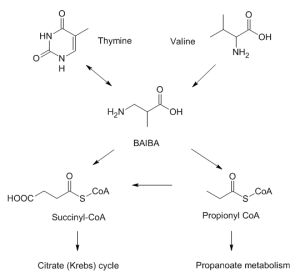
Simplified scheme of BAIBA metabolism, valine degradation, and thymine catabolism (image courtesy Kegg Pathway)
PGC 1 alpha is a protein whose expression increases during and after exercise. It helps control many biological programs related to energy metabolism and contributes to our bodies' responses to the stimulus of physical exercise.
Also known as PGC1α (PPARγ coactivator-1 α), it performs the following tasks:
- increasing development of mitochondria (cell powerhouses),[30]
- prevents muscular atrophy,[31]
- regulate blood pressure,
- regulate cholesterol production and utilization, and
- affects the composition of our fat cells.[32]
However, PGC1 alpha is a protein only found in muscle tissue, so it requires "messenger" molecules known as mokines to do its bidding elsewhere in the body.[32] Two such myokines are irisin and BAIBA.
PPAR Alpha - The real player (if PGC1 alpha is active)
However, it's important to note that BAIBA actually performs most of its roles through PPAR alpha activation (PPAR is short for proliferator-activated receptor alpha).[1,10] It's only released when PGC1 alpha is also expressed, though, so both are critically important.
When BAIBA acts on PPARa, it initiates the roles of white adipose browning, increased beta oxidation, and prevention of fat creation.[1,5,33,34]
The chain reaction to understand
What effectively happens is the following: exercise increases PCG-1a, PGC-1a increases BAIBA, BAIBA boosts PPAR alpha activity, and PPARa then goes on to do the work we need (and love) when exercising.
PPAR alpha performs much of its work via an increase of the transport, binding, and activation of fatty acids, leading to increased beta oxidation (the process where fat is broken down for energy use).[35,36]
The Brown Fat Connection
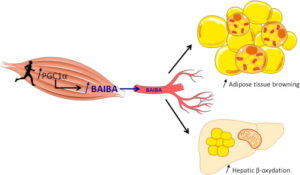
"BAIBA is released from the muscle after an exercise bout, promoting differentiation of brown adipocyte-like cells within subcutaneous fat depots and fat oxidation in the liver."[37]
One of the most impressive effects of PPARa is its ability to trigger the "browning of fat".[38] This is the process when white adipose tissue (the ugly and metabolically-unhealthy kind we wish to burn) turns to brown adipose tissue (the thermogenic kind that increases energy expenditure).[39] This becomes important later on, because as we'll see, BAIBA has the incredible ability to get PPARa to induce a "beiging" of white fat, potentially making it more active and easier to burn.
What's this all mean?
What this ultimately means is that PGC-1a and PPARa are critically necessary for exercise-induced fat metabolism, and when BAIBA is supplemented in animal models, they get turned up, even without exercise!
While we never recommend not exercising, there are certain times when we cannot (perhaps due to injury or physical inability), and there are certain times when we'd like to increase our body's response to the exercise we can perform. These are situations where BAIBA seems to have profound effects.
With the background in place, let's see how BAIBA actually performs as a supplement:
BAIBA-specific research
The following studies have been demonstrated in animal models:
-
BAIBA converts white fat to a "hybrid" fat
The landmark Roberts study that put BAIBA on our map in 2014 was due to the incredible effect that BAIBA upregulated PPARa so much that it "beiged" white adipose tissue, giving it characteristics of brown fat, yet within the white fat cells.[1]
This allowed for more heat generation from the stored fat, likely amplifying fat oxidation capabilities over time (in line with what previous animal studies already showed).
-
Increased fat oxidation
Researchers have demonstrated supplemental BAIBA's ability to increase fatty acid oxidation in the liver mitochondria.[7] This is incredibly important, because too much liver fat can lead to tremendous amounts of disease, and we postulate that the body will prioritize burning this fat before really attacking body fat stores en masse.
-
Increased ketone body generation
In line with the above study, it was discovered a year prior that ingestion of BAIBA led to increased levels of beta-hydroxybutyrate (BHB),[19] the primary ketone body generated when beta-oxidizing fat. This leads us to believe that β-aminoisobutyric acid is a ketogenic compound, and the aforementioned study discussed above (in the "increased fat oxidation" section) closed the loop on why these BHB levels were increased.
In addition, BAIBA supplementation also led to statistically significant increases of acetoacetate, another ketone body.[19]
-
Prevention of fat gain in cases of partial leptin deficiency
Leptin is a hormone that helps regulate energy intake by inhibiting hunger. It's made by fat cells and intestinal cells, and research has showed that obese individuals have decreased leptin sensitivity and are unable to feel full, despite already having plenty of fat/energy stores and high levels of leptin.[40] Due to this situation, one of the challenges in treating obese individuals is targeting satiety through proper diet (protein, fat, and mineral leverage are of utmost importance), but researchers always try to find if more can be done.
An interesting animal study duplicated the increases in fatty acid oxidation in the liver, but also noted that four months of BAIBA supplementation almost completely prevented the gain of body fat mass (and partially protected against the loss of lean body mass) in mice that were partially deficient in leptin.[1,6]
It did not help with the animals that were completely leptin deficient, however, and was less effective with wild animals. But in the case of those with some leptin issues, BAIBA shows incredible promise, and could be another chip against the obesity epidemic.
-
Improvements in Handling Glucose "Disturbances" in Diabetic Mice
A study on diabetic mice showed that four weeks of regular oral administration of BAIBA reduced blood glucose and lipid levels, as well as improvements to several key enzymes related to insulin resistance and lipid accumulation.
In the study, an "assault" of glucose was administered, and the mice taking BAIBA had a far better time clearing it and keeping blood glucose and liver weights levels low compared to those that did not receive BAIBA. More importantly, this was despite increased caloric intake![9]
However, it's important to note that the control group which received no glucose (and no BAIBA) had the best scores, meaning that it's still better for diabetics to not eat any sugar at all than to eat sugar alongside supplements like BAIBA. Supplements can only go so far, especially in the case of such "saturation-based" diseases.
-
Improvement of Glucose Tolerance on high-fat diets
Despite eating the most calories, the high-fat diet mice that also received BAIBA had far less weight gain and better blood glucose scores than their non-BAIBA counterparts.[8]
Similar to the above study, it has been demonstrated that after being put on a high-fat diet and becoming insulin resistant, mice also had a better time dealing with a glucose challenge when given BAIBA.[8]This gives a potential application for MitoBurn for a high-fat, low-carb dieter who wants to supplement carbohydrates for performance or recovery purposes... or one who is just looking for a high-carb cheat meal.
-
Prevention of Disuse-Based Bone and Muscle Loss
As noted above, we always recommend exercise when possible. But sometimes, for various reasons, it simply can't be done -- or some people are unable to pull the "exercise lever" hard enough to make a major impact.
The good news is that diet is still most important,[24] so there is hope for those who are overweight but unable to exercise. The bad news is that this lack of exercise leads to bone and muscle loss,[41] which has serious ramifications over time.
Given the knowledge that exercise maintains bone and muscle mass, and that BAIBA induces an "exercise-like" chain reaction of biological processes, researchers wanted to see if it could also prevent muscle and bone loss when unloading mice from their hind legs.
It turns out that it did - there was less cell death, especially in younger mice.[10] Specifically, BAIBA was able to prevent the breakdown of mitochondria due to ROS (reactive oxygen species). It was even more protective than other known therapies tested!
While the research is preliminary, this is incredibly exciting for those who are unable to exercise but are looking to get back into it after some weight loss or injury recovery.
-
Protection against renal fibrosis
In 2018, researchers further hypothesized that BAIBA could perhaps prevent cell death in other organs, such as kidneys. They found it slowed the creation of connective tissue known as fibroblasts, and indeed attenuated the disease:[42]
"our data provide the first demonstration that BAIBA significantly alleviated the fibrotic responses and renal functional impairment in the obstructed kidneys. Inhibition of Ang II / IL-17 / ROS signaling pathway was responsible for the role of BAIBA in attenuating renal fibrosis. BAIBA may be useful for the treatment of patients with chronic kidney diseases."[42]
Again, it's important to note that these studies were done on mice, but there is a clear and consistent trend with BAIBA: it helps attenuate problems similar to the way exercise does.
Given that natural ingredients like MitoBurn can signal the body to execute the same "programs" as when you exercise, it's an incredibly exciting time now that we have a trusted, tested, and stable form of L-BAIBA in MitoBurn.
Safety Data: A Very High LD50 in Mice
Just at the end of 2019, NNB Nutrition contacted us with a new third-party analysis that was performed regarding the LD50 dosage of MitoBurn / L-BAIBA in mice. LD50 is short for "Lethal Dose, 50%" and means the "median lethal dose" -- which really means the amount that is required (usually in terms of body weight) needed to kill 50% of the test population.
Key data is below, but the conclusion is that MitoBurn's LD50 is greater than 2,000mg/kg body weight, as there was no mortality or adverse clinical reaction at that dose, which was the maximum tested.[43] They conclude that it is safe at the doses suggested on this and their websites.
Some key images are below, and unsurprisingly, the higher doses showed more weight loss! This of course does not mean we suggest these high doses. It means we are comfortable at the ones suggested on the page.
While we once again maintain the same doses suggested above, this provides for an additional level of safety data and comfort with MitoBurn / L-BAIBA.
Suggested FDA Compliance
IMPORTANT: The following information is based upon our research, but we are not lawyers. If you are a supplement manufacturer considering using BAIBA and would like further confirmation, please consult your legal team or contact us for DSHEA subject matter experts.
No statements on this page have been approved by the FDA.
In the United States of America, the Dietary Supplement Health and Education Act of 1994 (DSHEA 1994) is the de-facto law of the land when it comes to dietary supplement standards and definitions.[44]
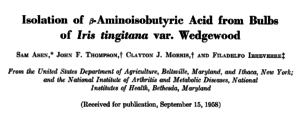
β-Aminoisobutyric Acid has basis in nature in both plants and animals, and is an amino acid (and a metabolite of an amino acid) to boot. Several bases are covered here.
Written and passed by Congress, DSHEA 1994 is oft-quoted for clause §3(a)(ff)(1), which defines the term "dietary supplement":
- (A) a vitamin;
- (B) a mineral;
- (C) an herb or other botanical;
- (D) an amino acid;
- (E) a dietary substance for use by man to supplement the diet by increasing the total dietary intake; or
- (F) a concentrate, metabolite, constituent, extract, or combination of any ingredient described in clause (A), (B), (C), (D), or (E);
(These clauses are in addition to the fact that the ingredient in question cannot be a scheduled drug, is intended for ingestion, and a few other stipulations.)
So where does BAIBA fit in?
BAIBA is actually covered multiple times by DSHEA 1994, in section (D) as well as twice in section (F). First, in (D), β-aminoisobutyric acid is in fact an amino acid.
Additionally, we have two forms of coverage in section (F) crossed with section (D), as it is a metabolite of two different amino acids in thymine and valine.
Additional basis in nature (botanicals)

MitoBurn L-BAIBA Powder is nearly tasteless, with just a smidgen of bitterness that's easily covered up.
However, we also have yet another case for compliance, as BAIBA is found in nature! Covering the occasionally-disputed "constituent of a botanical" clause that crosses sections (F) and (C), BAIBA has also been found in several plants, such as poaceae, fabaceae, glycine max, cucurbitaceae, and none other than theobroma cacao.[45] However, this information comes courtesy of the Canada Foundation for Innovation, and they do not cite any peer-reviewed research.
Isolated in Wedgewood Iris
To further the argument, another paper from 1958 titled "Isolation of β-Aminoisobutyric Acid from Bulbs of Iris tingitana var. Wedgewood" was written by researchers who were able to isolate the amino acid in Wedgewood iris as well.[46]
With this many cases covered, we are confident that MitoBurn far surpasses the minimum standard, and truly fills the role of "dietary supplement", as it is a naturally-occurring amino acid that many people could gain benefit from having more of.
The Anecdotal Side: Mike's MitoBurn Review
Below, Mike talks about his personal experience with BAIBA, both on and off training. He gets into warming up, heart rate, and other subtle effects. The long story short is that we consider this "Half a gear more", which we're always excited about with a non-stimulant ingredient!!
Mito is the future. NNB Nutrition's MitoBurn is the Ignition
The scientific community has quickly recognized that mitochondrial health is far more important than previously considered.
There are a few to improve mitochondrial status:
- Exercise - Especially HIIT (High Intensity Interval Training)
- Intermittent Fasting
- Sleep
- Appropriate Carbohydrate Intake (dependent upon body status
MitoBurn L-BAIBA may help you pull the first and second levers -- exercise and fasting -- harder than normal.
Pull the exercise lever harder
We theorize that MitoBurn can amplify lower-intensity exercise, stimulating the body into more of a HIIT-like response. We further believe that it can maintain an "exercise-like status" on the non-exercise portion of the day, or on rest days. And finally, we're excited that it could possibly bring some health benefits to those who cannot exercise due to injury or other ailments.
A smarter way to fast
Additionally, as PGC1a is also elevated when you fast, supplementing with BAIBA in a fasted state may be even more effective during those intermittent fasts - and there's an added possibility of increased BHB levels!
For nearly half a decade, we have been following this promising ingredient, hoping that someone could bring a biologically active, stable, and lab-tested form to the market for various fat burners, pre workouts, and glucose disposal agents. We now have that and more in MitoBurn, and the research is only getting started.
All PricePlow Articles Mentioning MitoBurn
See NNBNutrition.com for more information, or contact NNB directly at info@nnbnutrition.com.
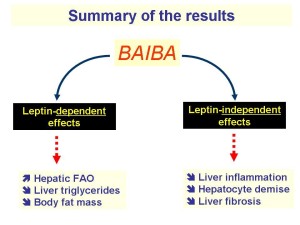
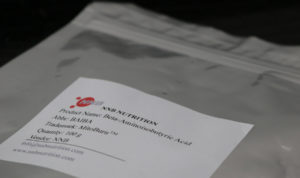
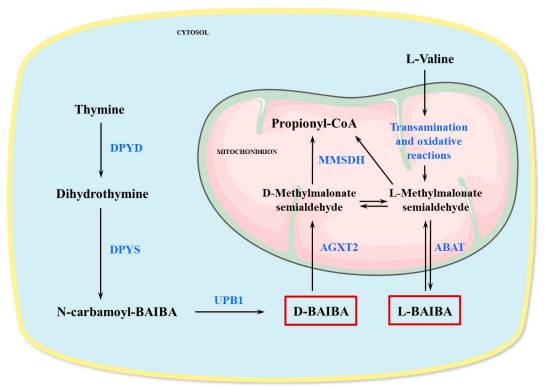
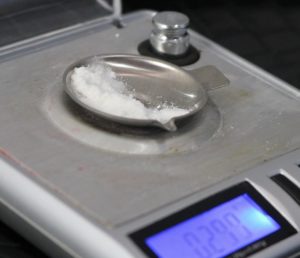
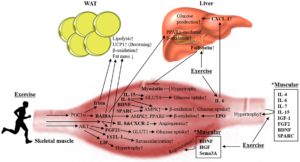
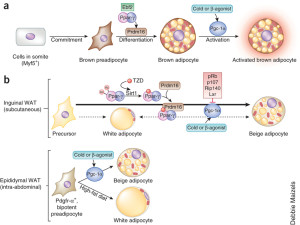






Comments and Discussion (Powered by the PricePlow Forum)